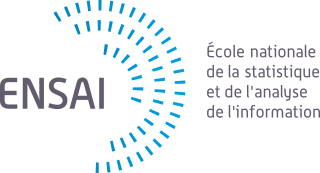Spark DataFrames#
Enable wider audiences beyond “Big Data” engineers to leverage the power of distributed processing
Inspired by data frames in R and Python (Pandas)
Designed from the ground-up to support modern big data and data science applications
Extension to the existing RDD API
References#
DataFrames are :#
The preferred abstraction in Spark
Strongly typed collection of distributed elements
Built on Resilient Distributed Datasets (RDD)
Immutable once constructed
With Dataframes you can :#
Track lineage information to efficiently recompute lost data
Enable operations on collection of elements in parallel
You construct DataFrames#
by parallelizing existing collections (e.g., Pandas DataFrames)
by transforming an existing DataFrames
from files in HDFS or any other storage system (e.g., Parquet)
Features#
Ability to scale from kilobytes of data on a single laptop to petabytes on a large cluster
Support for a wide array of data formats and storage systems
Seamless integration with all big data tooling and infrastructure via Spark
APIs for Python, Java, Scala, and R
DataFrames versus RDDs#
Nice API for new users familiar with data frames in other programming languages.
For existing Spark users, the API will make Spark easier to program than using RDDs
For both sets of users, DataFrames will improve performance through intelligent optimizations and code-generation
PySpark Shell#
Run the Spark shell:
pyspark
Output similar to the following will be displayed, followed by a >>> REPL prompt:
Python 3.6.5 |Anaconda, Inc.| (default, Apr 29 2018, 16:14:56)
[GCC 7.2.0] on linux
Type "help", "copyright", "credits" or "license" for more information.
2018-09-18 17:13:13 WARN NativeCodeLoader:62 - Unable to load native-hadoop library for your platform... using builtin-java classes where applicable
Setting default log level to "WARN".
To adjust logging level use sc.setLogLevel(newLevel). For SparkR, use setLogLevel(newLevel).
Welcome to
____ __
/ __/__ ___ _____/ /__
_\ \/ _ \/ _ `/ __/ '_/
/__ / .__/\_,_/_/ /_/\_\ version 2.3.1
/_/
Using Python version 3.6.5 (default, Apr 29 2018 16:14:56)
SparkSession available as 'spark'.
>>>
Read data and convert to Dataset
df = sqlContext.read.csv("/tmp/irmar.csv", sep=';', header=True)
>>> df2.show()
+---+--------------------+------------+------+------------+--------+-----+---------+--------+
|_c0| name| phone|office|organization|position| hdr| team1| team2|
+---+--------------------+------------+------+------------+--------+-----+---------+--------+
| 0| Alphonse Paul |+33223235223| 214| R1| DOC|False| EDP| NA|
| 1| Ammari Zied |+33223235811| 209| R1| MC| True| EDP| NA|
.
.
.
| 18| Bernier Joachim |+33223237558| 214| R1| DOC|False| ANANUM| NA|
| 19| Berthelot Pierre |+33223236043| 601| R1| PE| True| GA| NA|
+---+--------------------+------------+------+------------+--------+-----+---------+--------+
only showing top 20 rows
Transformations, Actions, Laziness#
Like RDDs, DataFrames are lazy. Transformations contribute to the query plan, but they don’t execute anything. Actions cause the execution of the query.
Transformation examples#
filter
select
drop
intersect
join
Action examples#
count
collect
show
head
take
Creating a DataFrame in Python#
import sys, subprocess
import os
os.environ["PYSPARK_PYTHON"] = sys.executable
from pyspark import SparkContext, SparkConf, SQLContext
# The following three lines are not necessary
# in the pyspark shell
conf = SparkConf().setAppName("people").setMaster("local[*]")
sc = SparkContext(conf=conf)
sc.setLogLevel("ERROR")
sqlContext = SQLContext(sc)
df = sqlContext.read.json("data/people.json") # get a dataframe from json file
df.show(24)
Schema Inference#
In this exercise, let’s explore schema inference. We’re going to be using a file called irmar.txt. The data is structured, but it has no self-describing schema. And, it’s not JSON, so Spark can’t infer the schema automatically. Let’s create an RDD and look at the first few rows of the file.
rdd = sc.textFile("data/irmar.csv")
for line in rdd.take(10):
print(line)
Hands-on Exercises#
You can look at the DataFrames API documentation
Let’s take a look to file “/tmp/irmar.csv”. Each line consists of the same information about a person:
name
phone
office
organization
position
hdr
team1
team2
from collections import namedtuple
rdd = sc.textFile("data/irmar.csv")
Person = namedtuple('Person', ['name', 'phone', 'office', 'organization',
'position', 'hdr', 'team1', 'team2'])
def str_to_bool(s):
if s == 'True': return True
return False
def map_to_person(line):
cols = line.split(";")
return Person(name = cols[0],
phone = cols[1],
office = cols[2],
organization = cols[3],
position = cols[4],
hdr = str_to_bool(cols[5]),
team1 = cols[6],
team2 = cols[7])
people_rdd = rdd.map(map_to_person)
df = people_rdd.toDF()
df.show()
Schema#
df.printSchema()
display#
display(df)
select#
df.select(df["name"], df["position"], df["organization"])
df.select(df["name"], df["position"], df["organization"]).show()
filter#
df.filter(df["organization"] == "R2").show()
filter + select#
df2 = df.filter(df["organization"] == "R2").select(df['name'],df['team1'])
df2.show()
orderBy#
(df.filter(df["organization"] == "R2")
.select(df["name"],df["position"])
.orderBy("position")).show()
groupBy#
df.groupby(df["hdr"])
df.groupby(df["hdr"]).count().show()
WARNING: Don’t confuse GroupedData.count() with DataFrame.count(). GroupedData.count() is not an action. DataFrame.count() is an action.
df.filter(df["hdr"]).count()
df.filter(df['hdr']).select("name").show()
df.groupBy(df["organization"]).count().show()
Exercises#
How many teachers from INSA (PR+MC) ?
How many MC in STATS team ?
How many MC+CR with HDR ?
What is the ratio of student supervision (DOC / HDR) ?
List number of people for every organization ?
List number of HDR people for every team ?
Which team contains most HDR ?
List number of DOC students for every organization ?
Which team contains most DOC ?
List people from CNRS that are neither CR nor DR ?
sc.stop()


